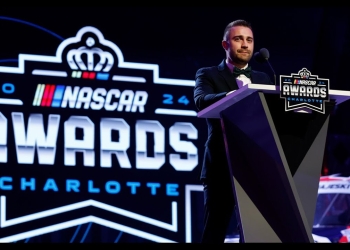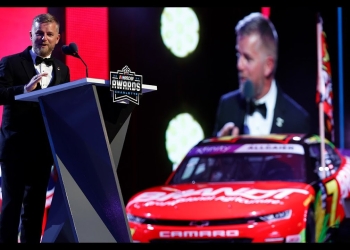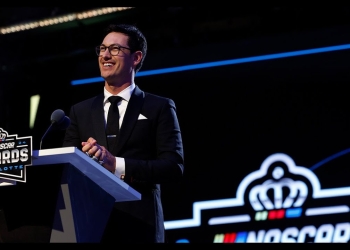The Art of Drafting Strategy in NASCAR
In the high-stakes world of NASCAR, success often hinges on more than just raw speed and driving skill. Teamwork and strategy play crucial roles, especially when it comes to drafting on superspeedways. This behind-the-scenes look at NASCAR's playoff strategy reveals the intricate dance between drivers, crew chiefs, and team owners as they navigate the complexities of drafting tracks.
The Evolution of Drafting Strategy
Over the years, NASCAR teams have developed increasingly sophisticated approaches to drafting. Gone are the days of simple "follow the leader" tactics. Today's teams employ a multifaceted strategy that requires constant communication and split-second decision-making.
"The key, I think, and something that I've walked through several different kind of eras of this, is your team has to trust that you're going to make the right decision or you're just going to make the best decision you had," explains a veteran crew chief.
This trust between driver and team is paramount, especially given the limited communication allowed during races. Unlike other tracks where crew chiefs can provide detailed feedback, at drafting tracks, the driver is often left to make crucial decisions on their own.
The Challenges of Limited Communication
On drafting tracks, NASCAR rules restrict the amount of information that can be shared between pit crews and drivers. This presents a unique challenge for teams accustomed to constant communication.
A crew chief describes the frustration:
"I mean now there's some fuel and stuff, but you get my point like now everywhere else I could say hey use a little more gas try this. I'm giving my driver information there. I'm like hey man good luck I'm kind of with it. I'm sitting here I'm not really riding with you but can't help you."
This limitation forces teams to develop clear pre-race strategies and trust their drivers to execute them effectively.
Click here to preview your posts with PRO themes ››
The Trackhouse Racing Approach
One team that has embraced a more flexible approach to drafting strategy is Trackhouse Racing. Founded by Justin Marks, the team has adopted a philosophy that empowers drivers and crew chiefs to make real-time decisions based on race conditions.
Key Elements of Trackhouse's Strategy:
- Driver Empowerment: Giving drivers the freedom to adjust their approach as the race unfolds.
- Flexible Game Plans: Avoiding rigid pre-race strategies that can't adapt to changing conditions.
- Trust in Expertise: Relying on the combined experience of drivers and crew chiefs to make the best decisions.
This approach stands in stark contrast to the more traditional, top-down strategies employed by some teams. As one team member notes, "Now what Justin Marks has done is like he puts it on us and lets us and Phil Surgeon and us and we just get to execute whatever we want and that's usually to race."
The Pitfalls of Rigid Strategies
The dangers of inflexible race plans become evident when teams stick too closely to pre-determined strategies, regardless of on-track realities. A crew chief recounts a frustrating experience:
"I'll sit through meetings and I have way before I got to Trackhouse and different series and things and they have this like 'this is what we're doing' or 'we're riding' or 'we're going' and then you get in the crash and they're like 'what are you?' They're like waving their hand when you get back to shop and I did exactly what you said. I rode and then I went and we crashed or no we went hard and we crashed on lap five."
Click here to preview your posts with PRO themes ››
This anecdote highlights the need for adaptability in NASCAR strategy, especially on unpredictable drafting tracks.
The Future of Drafting Strategy
As NASCAR continues to evolve, so too will the strategies employed on drafting tracks. Teams are likely to focus on:
- Enhanced Pre-Race Preparation: Developing more comprehensive scenario-based strategies.
- Improved Non-Verbal Communication: Finding new ways to convey information within NASCAR's rules.
- Advanced Data Analysis: Utilizing real-time data to inform mid-race decision-making.
Conclusion
The art of drafting in NASCAR is a complex blend of teamwork, strategy, and split-second decision-making. As teams like Trackhouse Racing demonstrate, success often comes to those who can balance careful planning with the flexibility to adapt on the fly. In the high-speed world of NASCAR, the ability to make the right call in the heat of the moment can mean the difference between victory and disappointment.









